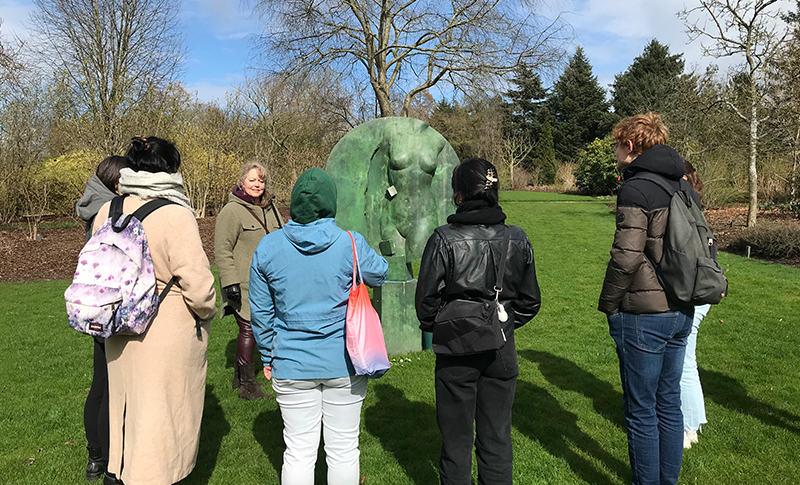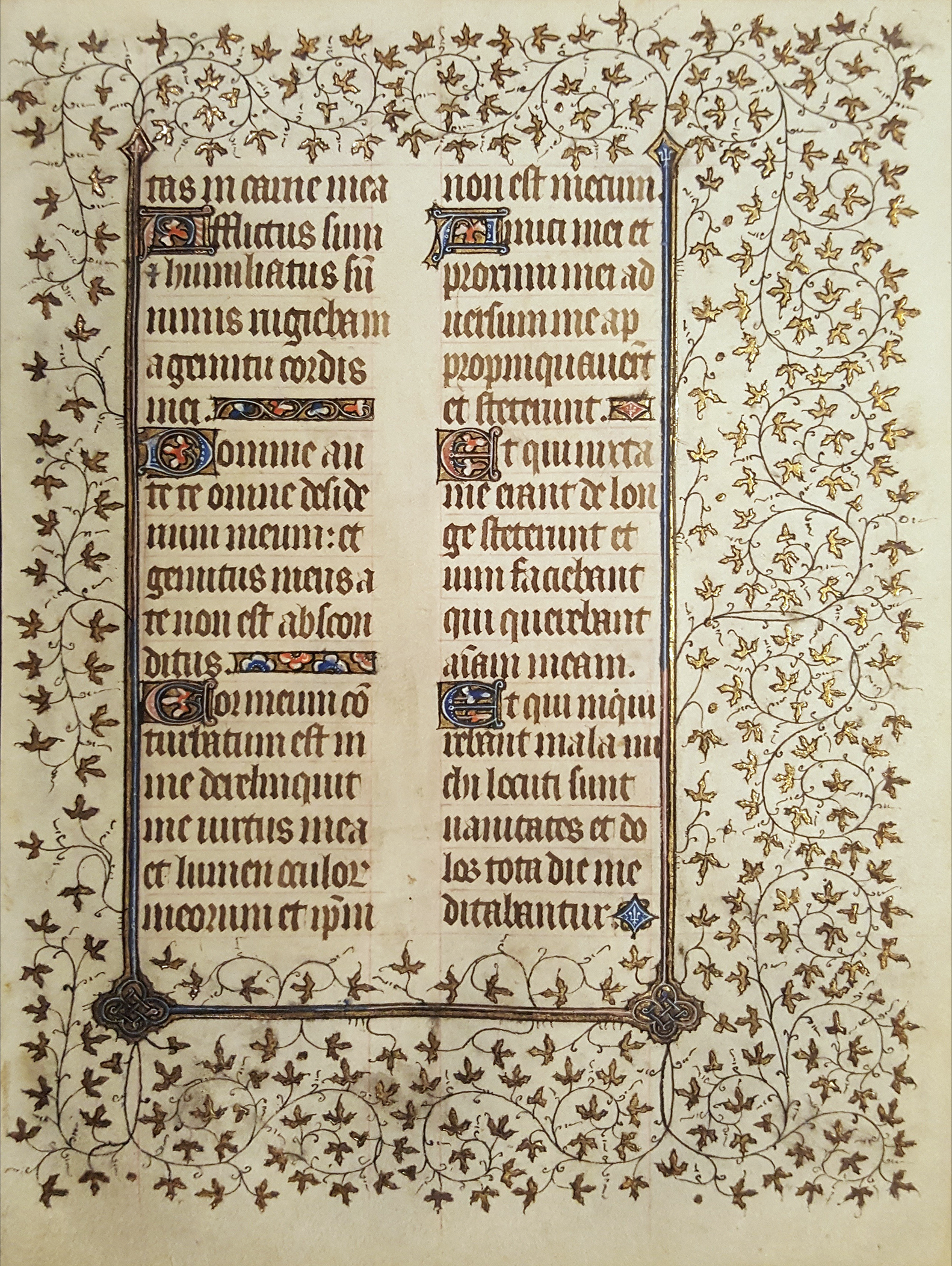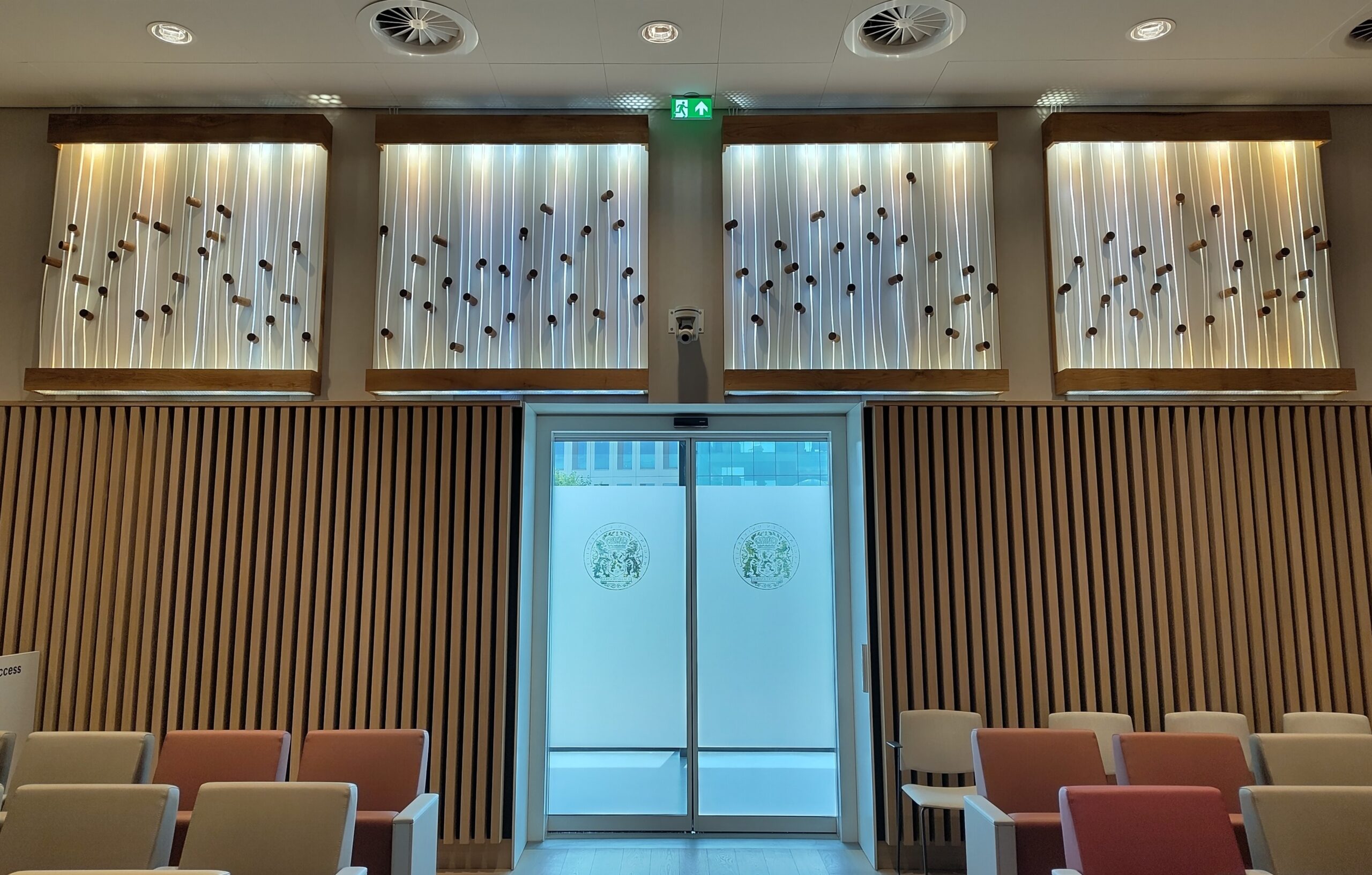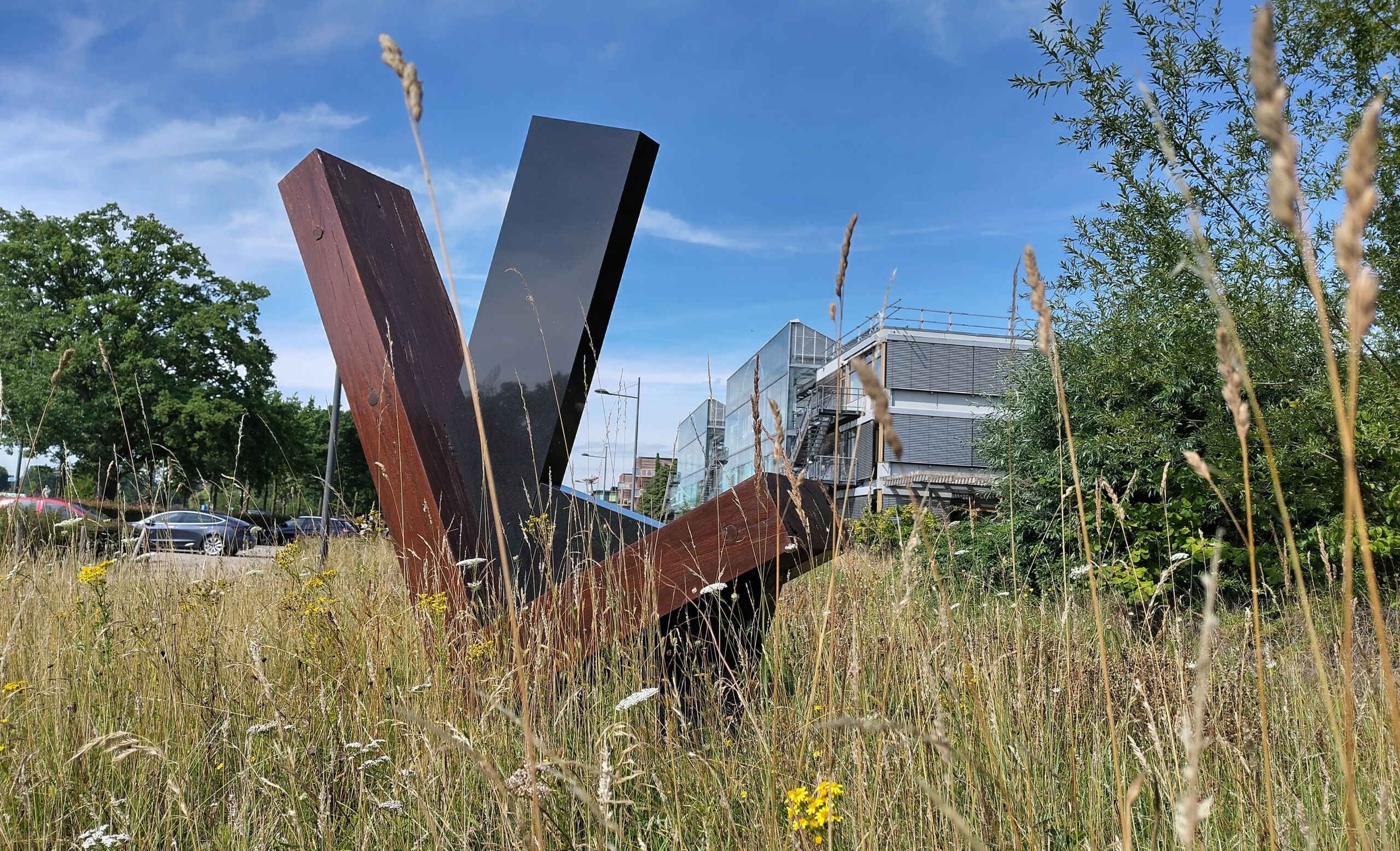Art appreciation is not the main thing on your mind when you start out on a Wageningen degree programme. But looking at art is central to the Philosophical Skills course, which is part of the Philosophy minor. The course teaches students how to deal with the preconceptions and ethical dilemmas that can crop up when you’re doing research.
‘What do you see here?’ lecturer Josette Jacobs asks a group of students. It is a chilly, changeable spring day and we are standing in front of a blue-green bronze sculpture in the Dreijen Arboretum. ‘I see a male and a female body. They are both naked and they are standing inside a circle,’ says one of the students. Someone else continues: ‘Maybe it’s referring to heads and tails? Because it looks a bit like a coin.’ Jacobs asks: ‘What makes you see that in it?’ ‘Well, it’s a circle, it’s flat and made of metal. And it has two different sides.’ Other interpretations follow: ‘The male body is much less naked than the female body, which I think is related to how our society views the difference between men and women. We see naked female bodies far more often.’
Not hamsters
The lecture at the Arboretum is what is known as a Visual Thinking Strategies session (VTS session). This method was developed by museums to get visitors to look at art better. The idea is that during a session, participants share their interpretations freely in response to short open questions. ‘On my course, we use this method so that you become aware of your own assumptions,’ says Jacobs. ‘The idea that the sculpture stands for a coin is an assumption you make as a viewer, because the sculpture doesn’t talk to you.’
For Evie Armendariz, a student of Nutrition and Health, the course is an eye-opener: ‘You discover that if you don’t ask questions, you make quite a lot of assumptions. In my degree programme, I get a lot of information, but you don’t know what that knowledge is based on.’
The other person might be right. That should be your starting point
The awareness-raising process that students go through on the course is not easy, says lecturer Jacobs: ‘I give my students a bellyache for life. I don’t turn them into hamsters, with fat cheeks stuffed with knowledge. No, I give them a chunk of knowledge that they’ve got to chew on. And you do that chewing during a VTS session. You could call it a philosophical skill.’ Jacobs uses other things besides works of art to teach this skill: ‘I also use a text by Nietzsche on this course. With such a text you can also question what is happening in it. That makes it easier to process a text.’
This is the second time this course has been taught. And once again this year, the students have to make a documentary about an ethical dilemma. ‘Making a documentary helps them to understand and apply Aristotle’s ethics – which we cover on the course. The ethics are about finding the golden mean, which requires phronesis: a process of weighing things up,’ Jacobs explains. For example, one group is making a documentary about genetically modifying humans: should we perfect humans with genetic technology or is it better not to mess with our genes? The documentary should present various pros and cons in order to arrive at a balanced ethical viewpoint. ‘Like that, my students learn to deal with that difficult ethical question. The answer also requires you to collaborate well, because the final decision must have the support of the whole team.’
Knowledge hurts
The German philosopher Hans-Georg Gadamer comes up a lot on the course too. ‘His book Truth and Method is about what method you use to find out the truth. He gives a good description of the process of understanding,’ Jacobs says. According to Gadamer, understanding goes together with shedding your preconceptions: ‘Understanding arises when you brush away your own traditions or preconceptions and embrace new ideas.’ He talks about the fusion of horizons, meaning a merging of your own horizon of understanding with someone else’s.’ That’s the source of the ‘bellyache’, says Jacobs: ‘To understand someone else, you have to set your own traditions aside. And that hurts.
I don’t turn them into hamsters with fat cheeks stuffed with knowledge
That’s why I say: knowledge hurts.’ With all the bellyache it entails, this might not sound like the most attractive course on offer at WUR. Jacobs: ‘But that pain is present in every course. You’ve got to learn to live with it. So don’t run away from it to go drinking with the crowd every Friday night, as I see a lot of students doing.’
The work of humans
What can the scientists of the future, as Jacobs calls the Wageningen students, learn from looking at art? ‘Without preconceptions, we have no knowledge – that’s the most important message. That’s what a Visual Thinking Strategies session shows: you bring your existing knowledge to bear on the artwork and use it to try to decipher it.’ This message calls for a change of attitude by the researcher: ‘What we’ve got to get rid of is the really arrogant I’m-always-right attitude. We must respect the fact that science is the work of humans.’ Gadamer’s philosophy can help with that, says Jacobs: ‘The most important lesson I learned from Gadamer is that the other person might be right. That should be your starting point.’

 Lecturer Josette Jacobs with a group of students near a bronze sculpture in De Dreijen Arboretum. Text and photo Maurice Schoo.
Lecturer Josette Jacobs with a group of students near a bronze sculpture in De Dreijen Arboretum. Text and photo Maurice Schoo. 

